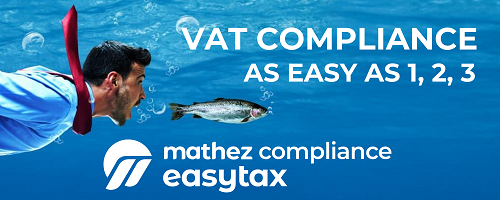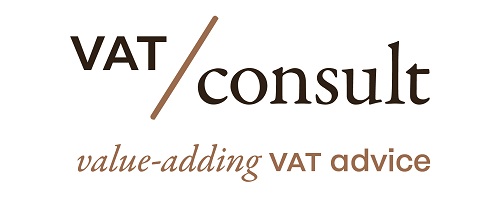On March 27, 1990, the ECJ issued its decision in the case C-126/88 (Boots).
Article in the EU VAT Directive
Article 11(A)(1)(a) and 11(A)(3)(b) of the Sixth Directive (Article 78 & 79 of the EU VAT Directive 2006/112/EC)
Sixth VAT Directive
Article 11
A. Within the territory of the country
- 1. The taxable amount shall be:
- (a) in respect of supplies of goods and services other than those referred to in (b), (c) and (d) below, everything which constitutes the consideration which has been or is to be obtained by the supplier from the purchaser, the customer or a third party for such supplies including subsidies directly linked to the price of such supplies;
- (b) in respect of supplies referred to in Article 5 (6) and (7), the purchase price of the goods or of similar goods or, in the absence of a purchase price, the cost price, determined as the time of supply;
- (c) in respect of supplies referred to in Article 6 (2), the full cost to the taxable person of providing the services;
- (d) in respect of supplies referred to in Article 6 (3), the open market value of the services supplied.
- “Open market value” of services shall mean the amount which a customer at the marketing stage at which the supply takes place would have to pay to a supplier at arm’s length within the territory of the country at the time of the supply under conditions of fair competition to obtain the services in question.
- 2. The taxable amount shall include:
- (a) taxes, duties, levies and charges, excluding the value added tax itself;
- (b) incidental expenses such as commission, packing, transport and insurance costs charged by the supplier to the purchaser or customer. Expenses covered by a separate agreement may be considered to be incidental expenses by the Member States.
- 3. The taxable amount shall not include:
- (a) price reductions by way of discount for early payment;
- (b) price discounts and rebates allowed to the customer and accounted for at the time of the supply;
EU VAT Directive 2006/112/EC
Article 78
The taxable amount shall include the following factors:
(a) taxes, duties, levies and charges, excluding the VAT itself;
(b) incidental expenses, such as commission, packing, transport and insurance costs, charged by the supplier to the customer.
For the purposes of point (b) of the first paragraph, Member States may regard expenses covered by a separate agreement as incidental expenses.
Article 79
The taxable amount shall not include the following factors:
(a) price reductions by way of discount for early payment;
(b) price discounts and rebates granted to the customer and obtained by him at the time of the supply;
(c) amounts received by a taxable person from the customer, as repayment of expenditure incurred in the name and on behalf of the customer, and entered in his books in a suspense account.
Facts
- The questions were raised in proceedings in which The Boots Company PLC and its subsidiaries (hereinafter referred to as ‘Boots’) are challenging decisions of the Commissioners of Customs and Excise (hereinafter referred to as ‘the Commissioners’) relating to the assessment of value-added tax (VAT) which Boots must pay on certain promotional sales effected in 1984.
- In appears from the order for reference and the documents relating to the case that Boots retails various kinds of goods through stores located throughout the United Kingdom. It uses inter alia a promotion scheme involving coupons printed on the packaging of certain goods which it distributes (hereinafter referred to as ‘premium goods’). The coupons, obtained free of charge by customers upon the purchase of those goods, entitle the persons presenting them upon a subsequent purchase from Boots of the same or different goods specified on the coupons (hereinafter referred to as ‘redemption goods’) to a price reduction equal to the nominal value indicated on them.
- The cost of the promotions conducted by Boots is, depending on the case, borne either entirely by Boots or by its suppliers, in which case pursuant to contracts concluded with Boots they reimburse to Boots the nominal value of the coupons returned to them, or partly by Boots and partly by its suppliers.
- In its tax return made in accordance with Section 29 of the Value-Added Tax Act 1983, Boots included, in respect of the coupons, in its ‘gross takings’ only the sums received from its suppliers in exchange for the coupons which had been surrendered to it upon sales in respect of which the suppliers bore all or part of the promotion costs. It did not include in its gross takings the nominal value of the coupons, which it destroyed when all or part of the promotion costs were borne by itself, since it took the view that the consideration for redemption goods was limited to the amount actually paid by the purchaser.
- The Commissioners, however, took the view that the consideration for redemption goods comprised not only the sum of money paid but also the value of the coupon surrendered. They considered that Section 10(3) of the Value-Added Tax Act 1983 was applicable. That section provides that: ‘If the supply is not for a consideration or is for a consideration not consisting or not wholly consisting of money, the value of the supply shall be taken to be its open market value’. Pursuant to that section, the Commissioners adopted with regard to Boots decisions requiring it to adjust its ‘gross takings’ by adding to its cash receipts the differences between the cash takings from sales of redemption goods and their open market value. In their decisions the Commissioners assessed the tax adjustment imposed on Boots at UKL 10 727.03 for the calendar year 1984.
- In a judgment of 18 March 1986 the London Value-Added Tax Tribunal, to which Boots had appealed against the decisions of the Commissioners, upheld the Commissioners’ assessment. Against that judgment Boots appealed to the High Court of Justice disputing that it was subject to VAT on the open market value of redemption goods in so far as the cost of those promotions was borne entirely or partly by itself.
- Before the High Court of Justice Boots argued that, as far as sales of redemption goods were concerned, it ought to have been assessed to tax on the basis of the reduced price actually paid by the purchaser. It submitted in particular that since the coupons had no value to it, they did not form part of the consideration for the purposes of the Sixth Directive and that the reduction on the price of redemption goods was a ‘rebate’ or ‘discount’ within the meaning of Article 11 A 3(b) of the Sixth Directive. It also argued that Section 10(3) of the Value-Added Tax Act 1983, pursuant to which the Commissioners had assessed VAT, was incompatible with Article 11 of the Sixth Directive
Questions
- (1) Is Article 11 A 1(a) of the Sixth Council Directive to be interpreted so that “everything which constitutes consideration which has been or is to be obtained by the supplier from the purchaser, the customer or a third party” consists only of the payment of money by the customer?
- (2) Does a retailer obtain consideration from a customer within the meaning of Article 11 A 1 (a) of the Sixth Council Directive when he accepts from the customer a coupon entitling him to a price reduction on a purchase of the goods specified on the coupon, which coupon was given by the retailer to the customer at the time of purchase of other goods from the retailer at their normal retail selling price?
- (3) Is the expression “price discounts and rebates allowed to the customer and accounted for at the time of supply” in Article 11 A 3(b) of the Sixth Council Directive to be interpreted to cover the difference between the normal retail selling price of the goods supplied and the sum of money actually received by the retailer for those goods where a coupon, obtained as above, is surrendered at the same time?
- (4) Where a retailer supplies redemption goods to a customer for a sum of money which is less than the normal retail selling price of the goods because at the time of the supply the customer surrenders a coupon acquired at the time of purchase of other goods from the same retailer,
- (a) is the taxable amount in Article 11 A 1 (a) of the Sixth Council Directive the sum of money received by the retailer for the redemption goods, or
- (b) the sum of money received by the retailer for the redemption goods together with the value of the coupon, and if that is the case, how is the value of the coupon to be determined, or
- (c) if neither of the above applies, what is the taxable amount in these circumstances?
- (5) If “consideration” may include not only the payment of money but also the surrender of the coupon to the supplier of the goods in question do the provisions of Article 11 A 1(a) prevent a Member State from evaluating the taxable amount by reference to the price which the customer would have to pay to obtain the goods for a consideration wholly in money?
- (6) Does a national rule, in existence on 1 January 1978, providing that “if the supply of a good is not for a consideration or is for a consideration not consisting or not wholly consisting of money, the value of the supply shall be taken to be its open market value”, constitute a derogation from the provisions of Article 11 of the Sixth Council Directive which should, under Article 27 of the Sixth Council Directive, have been notified to the Commission of the European Communities before 1January 1978?
AG Opinion
(1) The taxable amount defined in Article 11 A 1(a) of the Sixth Directive on turnover taxes does not refer exclusively to the payment of a sum of money by the customer.
(2) A retailer grants a price discount or rebate as defined in Article 11 A 3(b) of the Sixth Directive when, upon the surrender of a coupon given upon the sale of a first article, he allows a price reduction upon the sale of a second article specified on the coupon. Only the price actually received by the retailer for the second article then falls within the taxable amount.
Decision
Article 11 A 3(b) of the Sixth Council Directive (77/388/EEC) of 17 May 1977, on the harmonization of the laws of the Member States relating to turnover taxes — Common system of value-added tax; uniform basis of assessment, must be interpreted as meaning that the expression ‘price discounts and rebates allowed to the customer and accounted for at the time of the supply covers the difference between the normal retail selling price of the goods supplied and the sum of money actually received by the retailer for those goods where the retailer accepts from the customer a coupon which he gave to the customer upon a previous purchase made at the normal retail selling price
Summary
Concept of “price discounts and rebates” Price discount on surrender of a voucher obtained free of charge by the customer with a previous purchase, including
The term “price discounts and rebates that are granted to the buyer … and which are obtained at the time when the transaction is performed” also includes the difference between the normal retail price of the delivered items and the actual price received by the retailer for those items. amount of money, when the customer’s retailer accepts a coupon gifted to the customer on a previous purchase at the regular retail price.
Source
Similar ECJ cases
Reference to the case in the other EU MS
Newsletters















